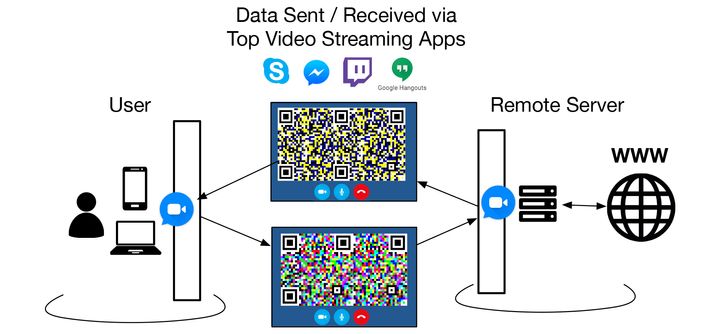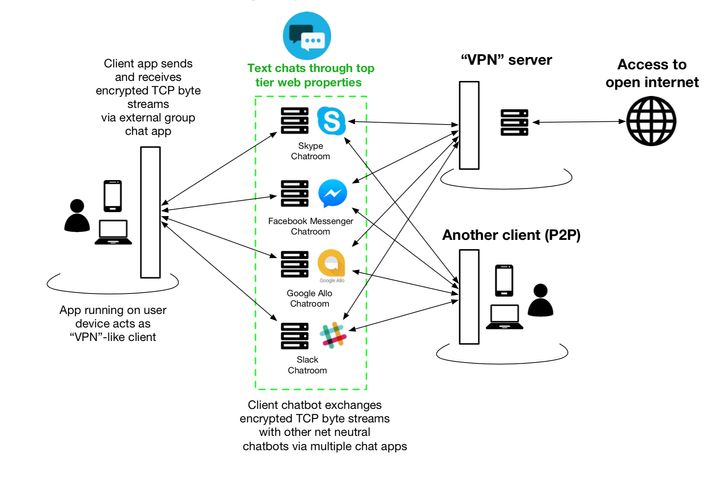
An example of routing data through apps like Skype
There’s lots of discussion around decentralizing the Internet, from blockchain to DIY mesh WiFi.
But what about the average US Internet user that only has one ISP choice like Comcast? It takes a long time and lots of upkeep to build new networks, especially in rural “last-mile” areas.
I propose a method for piggybacking on tiered Internet video broadcast streams to assure Net Neutrality if/when ISPs can censor, throttle or otherwise hinder equal access to the whole Internet.

Sample data being sent through video frames
Video streaming is huge. From gaming to conference calls and chatting with friends, video broadcasting is ubiquitous across top Western Internet companies: Skype (Microsoft), Twitch (Amazon), Facebook, Google.
An app that runs on a user’s computer or phone can piggyback on the largest video broadcasting providers to send encoded data as video and receive decoded data as video from remote servers.
The key takeaway is that to an ISP like Comcast, all of your data would look it was coming from and going to Google, Facebook and other top tier domains, making it difficult or nearly impossible to throttle without interrupting other traffic from these top domains.
Previous Case Studies
Similar research and real world implementations have been done in this space to route around censorship or little access to Internet.
Phil Kim presented Skor in 2016 about ongoing research into tunneling data over Skype video chat to circumvent censorship [slides]. The technology is still in development and needs work to increase throughput. I can’t find the code open sourced yet.

Another service used in Iran now called Toosheh, works similarly by beaming data through satellite television for users to access banned content. Thanks to Griffin Boyce for the above references.
Proposed Methods for Major Internet Protocols
TCP

Like an ongoing video conference call, continuously decoding and encoding
UDP Download

Like watching someone else’s live video stream, then decoding it
UDP Upload

Like broadcasting your own live video stream, others watch and decode it
TCP: Alternative Method

Using text in an ongoing group chatroom to send and receive data.
Stealth Mode
If ISPs catch on to this form of Net Neutrality assurance, digital steganography is a reliant form of stealth. It can hide secrets inside ordinary looking images and videos that most likely only the end user can decode.


The near static nature of home surveillance video and audio would help with optimizing compression. The scenery rarely changes, so embedding additional data would be less trivial.
Network Optimization

If implemented, this net neutrality assurance system can optimize network traffic by switching between video channels to watch or broadcast to on the fly for connection to P2P (Peer to Peer) or VPN-style servers linked to the World Wide Web.
The app could act as a layer inside a blockchain-dependent program like Blockstack: which sits on client devices and acts as “a new internet for decentralized apps where users own their data.”
Next Steps
This article acts as a conversation starting point, to build an open source development community on top of. With the idea of exploiting top tier web domains, there’s more to research and start implementing before the ISPs gain full control over the Internet.
I’ve started a new GitHub repo for others to start collaborating on this together, while we still can.
